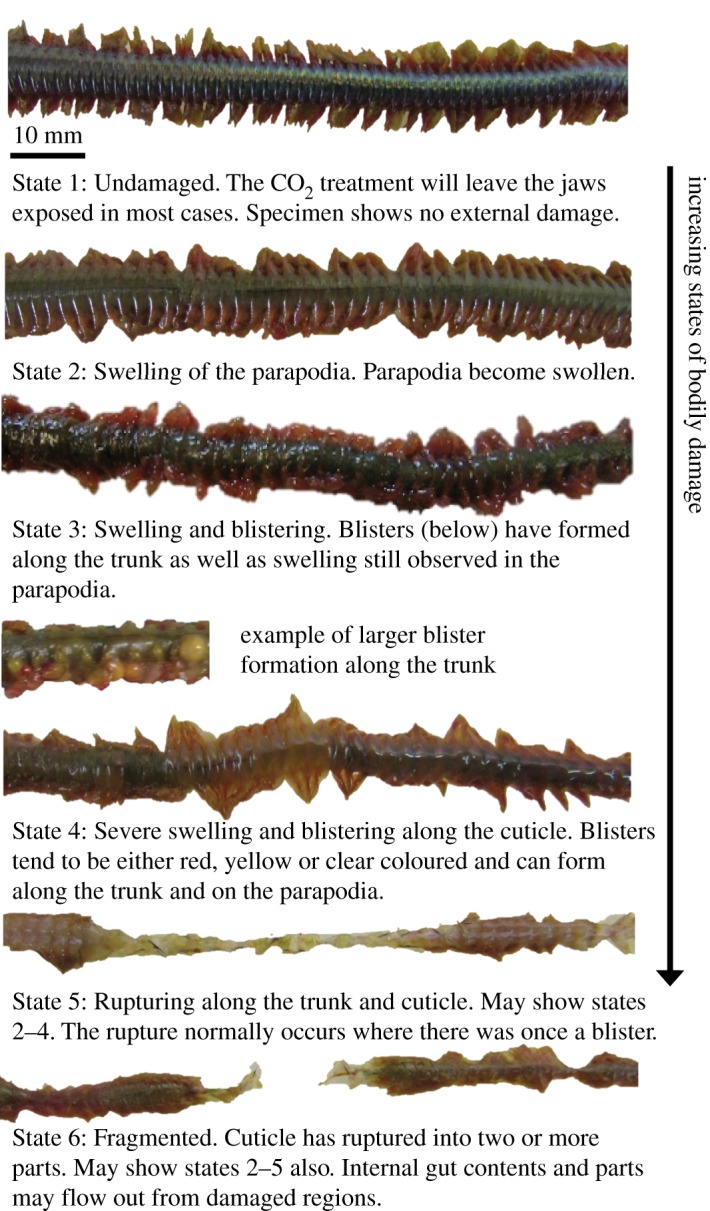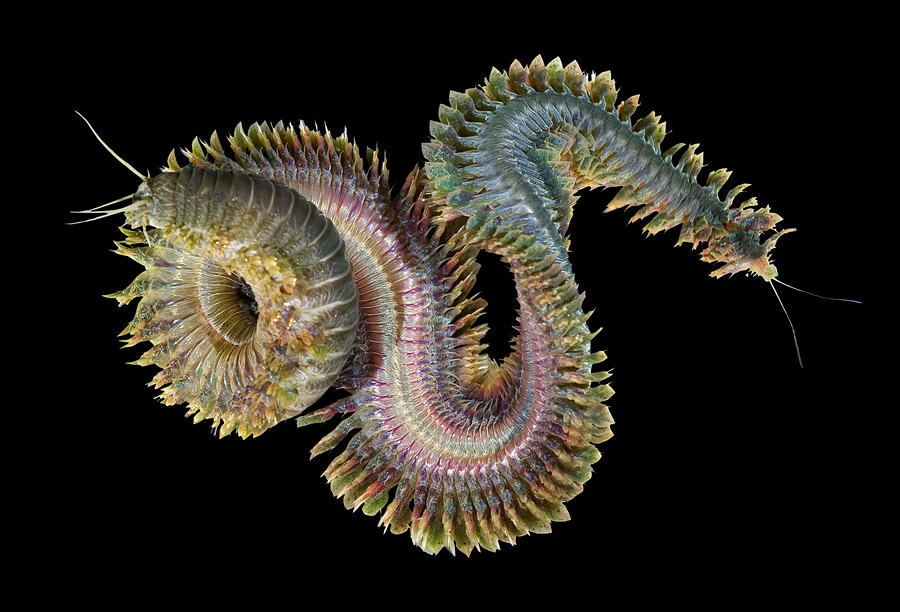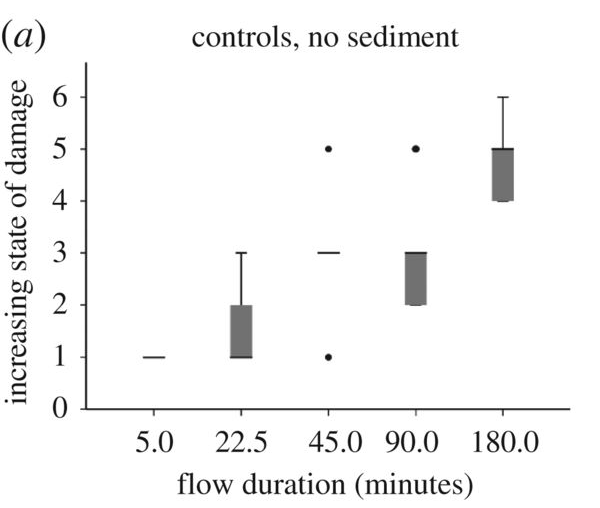Modelling taphonomic processes in the laboratory
In this experiment, palaeontologist Orla Bath-Enright, University of Portsmouth, simulated the transportation of polychaete worms in an annular flume tank to see how it would affect the quality of their remains.
Watch the video below to get an introduction to her experiments and the equipment she used.
The worms were placed in the flume tank and extracted at set times and their preservation rated. Examine the photographs below and discuss the preservation of each.
- How do they differ?
- Which anatomical characters change and how?
- When do anatomical characters become unrecognisable?
- When would the remains become unrecognisable compared to the unaffected worm?

Fig. 2

Fig. 7
The state of the remains were graded from 1: least damaged to 6: most damaged.

Fig. 8
The results of this first experiment show that with increased time in the flume tank, the worms experienced a steady increase in damage.
Orla, then included sediment in her experiments to see how that would affect the damage incurred by the worms. She used two different sediment types at two different concentrations: rounded grains at 5% volume, rounded grains at 10% volume, angular grains at 5% and angular grains at 10%. Using the above graph as a template, draw your predictions of how the state of damage will increase with time in the flume tank for each different condition and justify your reasoning.
- How do the results differ from what you predicted?
- What has the biggest effect on the quality of the remains?
- What does this demonstrate about transportation and how it affects the preservation of fossils?
Further discussion points:
- Worms are soft-bodied, so how might other groups animals be affected by transportation? Consider both arthropods and vertebrates.
- How would the remains look after a further two hours in the flume tank? What other variables could we introduce into this experiment?
- How might this experiment be improved upon?
- Transportation is just one element of what affects the preservation of fossils, what other considerations are there?
Watch below for Orla’s assessment of her own research.
Research:







